A discovery made at Dinosaur Park in Laurel, Maryland, in April has widened the view of dinosaurs in the region millions of years ago, with subsequent discoveries elevating the park’s status in the world of paleontology.
On April 23, paleontologists and volunteers with the Prince George’s County Department of Parks and Recreation discovered what they say is the largest theropod fossil in Eastern North America.
JP Hodnett, who is Dinosaur Park’s lead paleontologist and program coordinator, says he believes the 3-foot long fossil is the shin bone of an Acrocanthosaurus, the largest theropod of the Early Cretaceous period, estimated to measure about 38 feet long.
Acrocanthosaurus teeth had been previously been found at Dinosaur Park.
“It’s a large predatory dinosaur. The largest predatory dinosaur in North America until T. rex evolved about 50 million years later, but this is not a Tyrannosaur,” said University of Maryland paleontologist Tom Holtz. “It is actually more closely related to an earlier dinosaur from 35 million years older … called Allosaurus.”
While evidence of Acrocanthosaurus has mostly been found in Oklahoma and states in that region, Holtz said they have found isolated teeth and bones at the Laurel site that are around the same age as those found in Oklahoma.
“So we’re hoping, by preparing out this shinbone, we could see if it is indeed, first of all, a carnivorous dinosaur; and secondly, if it’s actually Acrocanthosaurus or another exciting possibility,” Holtz said.
“If there are features that show it’s similar to, but distinct from Acrocanthosaurus, that is possibly an entirely new species.”
Whatever they have found, Holtz said it was big — and dangerous.
“So this is the apex predator at the site. The largest. The top predator. The thing that’s eating everything else,” he said.
After additional fossils were found in the site, which sits off Contee Road, east of Route 1 in an area surrounded by warehouses, Dinosaur Park was reclassified as a dinosaur “bonebed,” the first discovered in Maryland since 1887.
A “bonebed” is term used by scientists when bones of one or more species are concentrated within a geologic layer.
The discovery did not happen all at once. It started almost by accident in 2014, when excavating equipment at the dig site chipped off a large ironstone rock that exposed a large bone that was, years later, determined to belong to a massive dinosaur, according to Hodnett.
The fossils discovered are believed to be from the Early Cretaceous period around 115 million years ago, around 50 million years before the appearance of Tyrannosaurus rex.
In contrast to the warehouses currently dotting the landscape, every geological indication is that there was a slow, meandering river running over that land, which emptied out into the Atlantic Ocean. What we know as the Chesapeake Bay hadn’t even been formed.
Paleontologists from the site said, at some point, a naturally occurring dam appeared — whether made by an animal or simply by the collection of vegetation debris. Scientists believe that dam kept the bodies of these dinosaurs from getting dragged away in the current.
“The discovery of this rare dinosaur fossil and bone bed marks an extraordinary milestone in the field of paleontology,” said Hodnett. “(It) opens a window into our ancient world and to the species that once roamed this land.”
Some of the plant and animals that have been found, Hodnett said, include small young sharks, tiny little mammals, crocodiles, turtles, “our own very tiny little relative of triceratops,” swift raptors, a spiky plant-eating dinosaur, and a giant meat-eating dinosaur that Hodnett said “probably can give Tyrannosaurus rex nightmares.”
There’s also Astrodon Johnstoni — “our own special Maryland State dinosaur and the largest dinosaur on this side of North America,” Hodnett said, not forgetting the local pride.
Another local paleontologist called the site in Laurel the most significant and best fossil site east of the Mississippi River.
“Our knowledge of the dinosaurs from the eastern part of North America has been lacking, compared to what we know about in the West,” said Holtz. “But this site is helping to change that.”
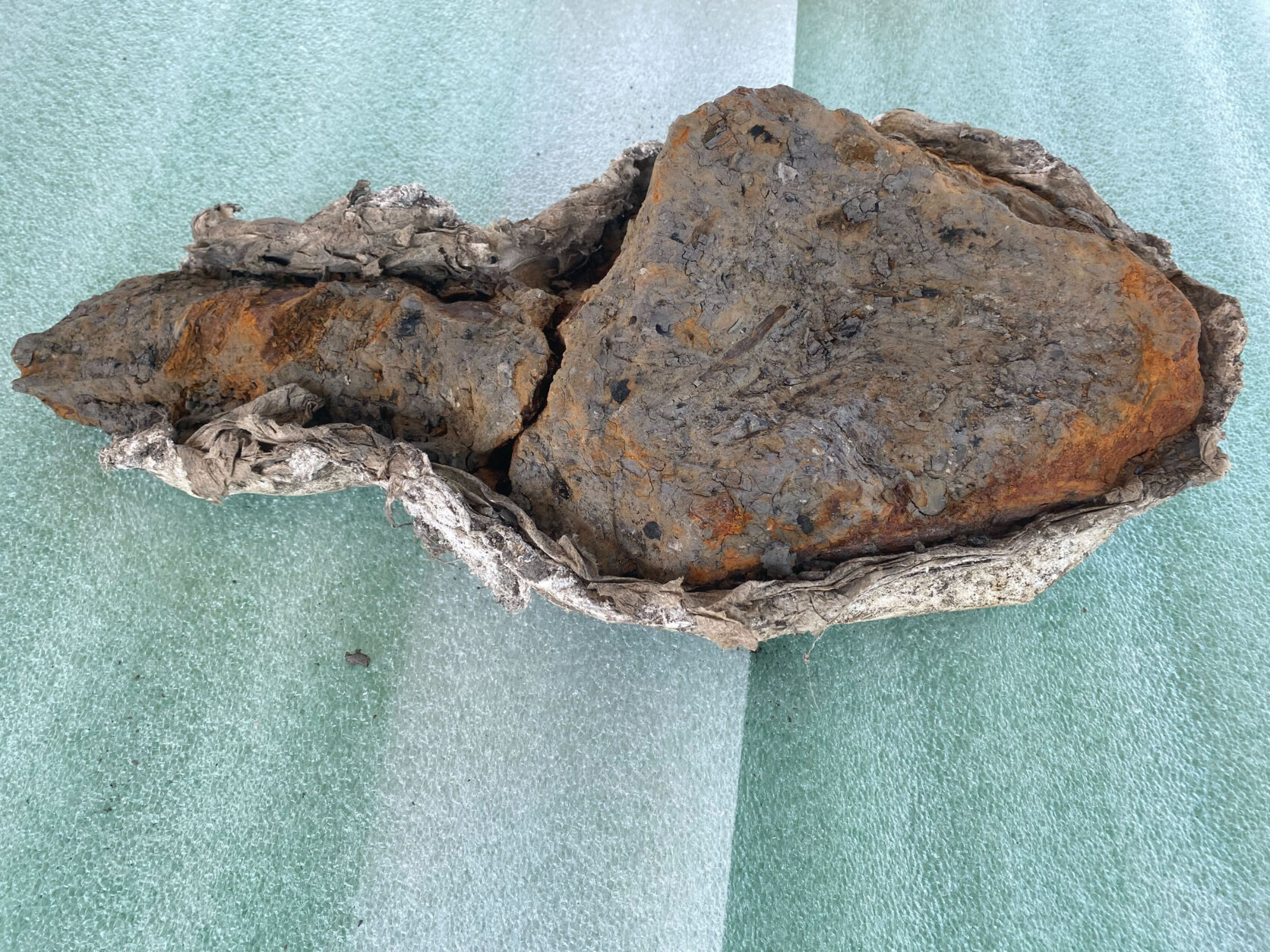
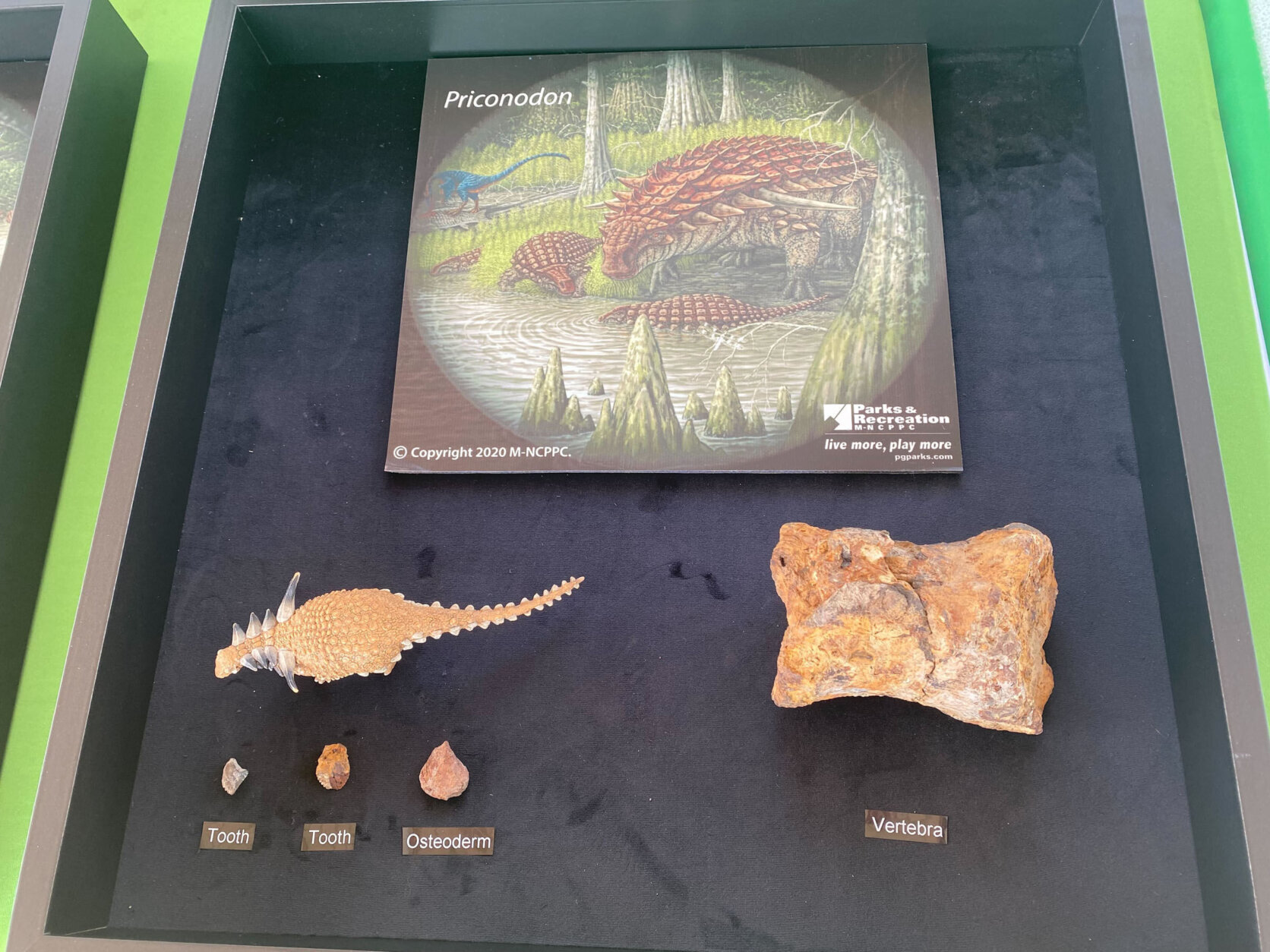
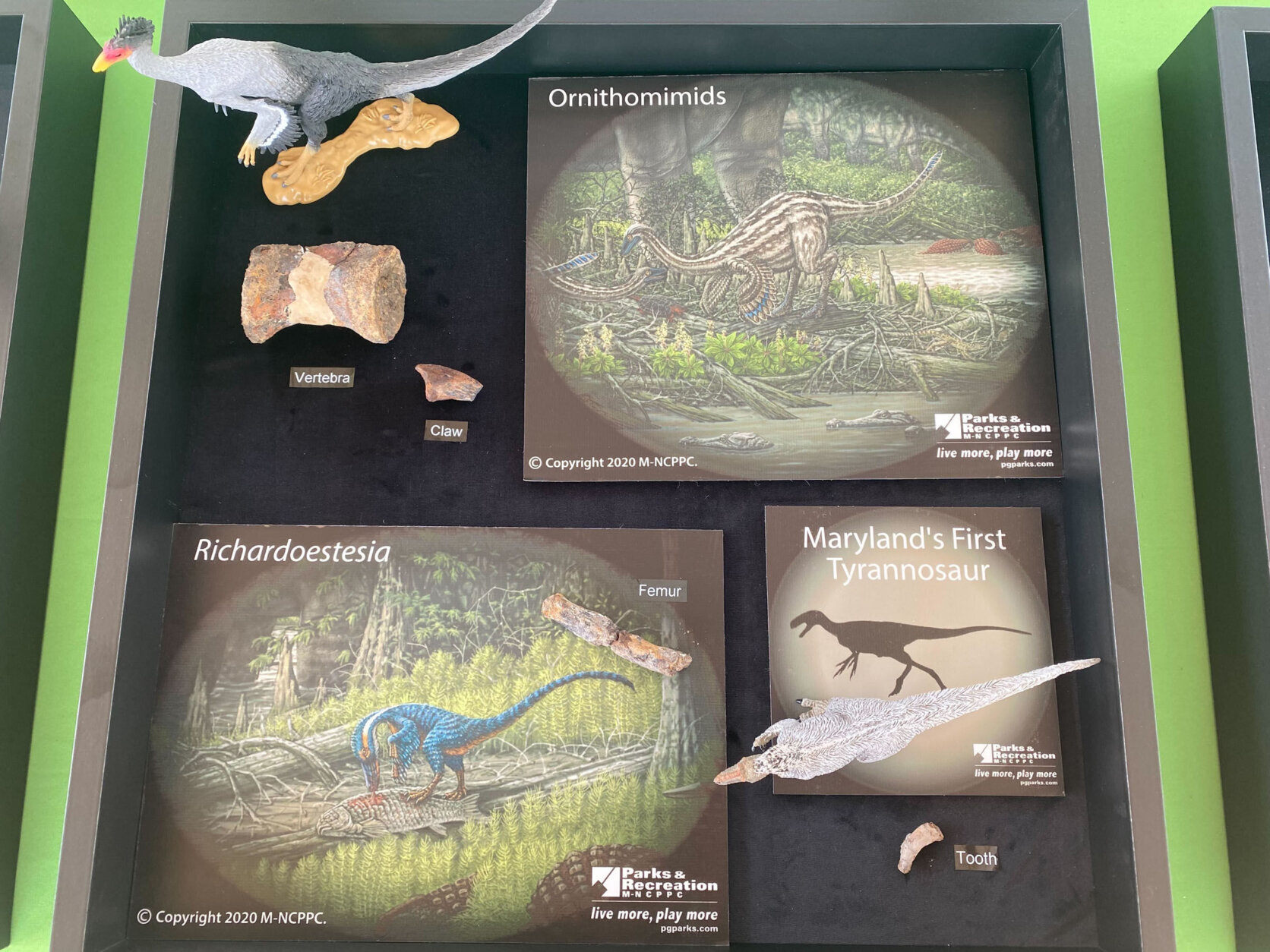
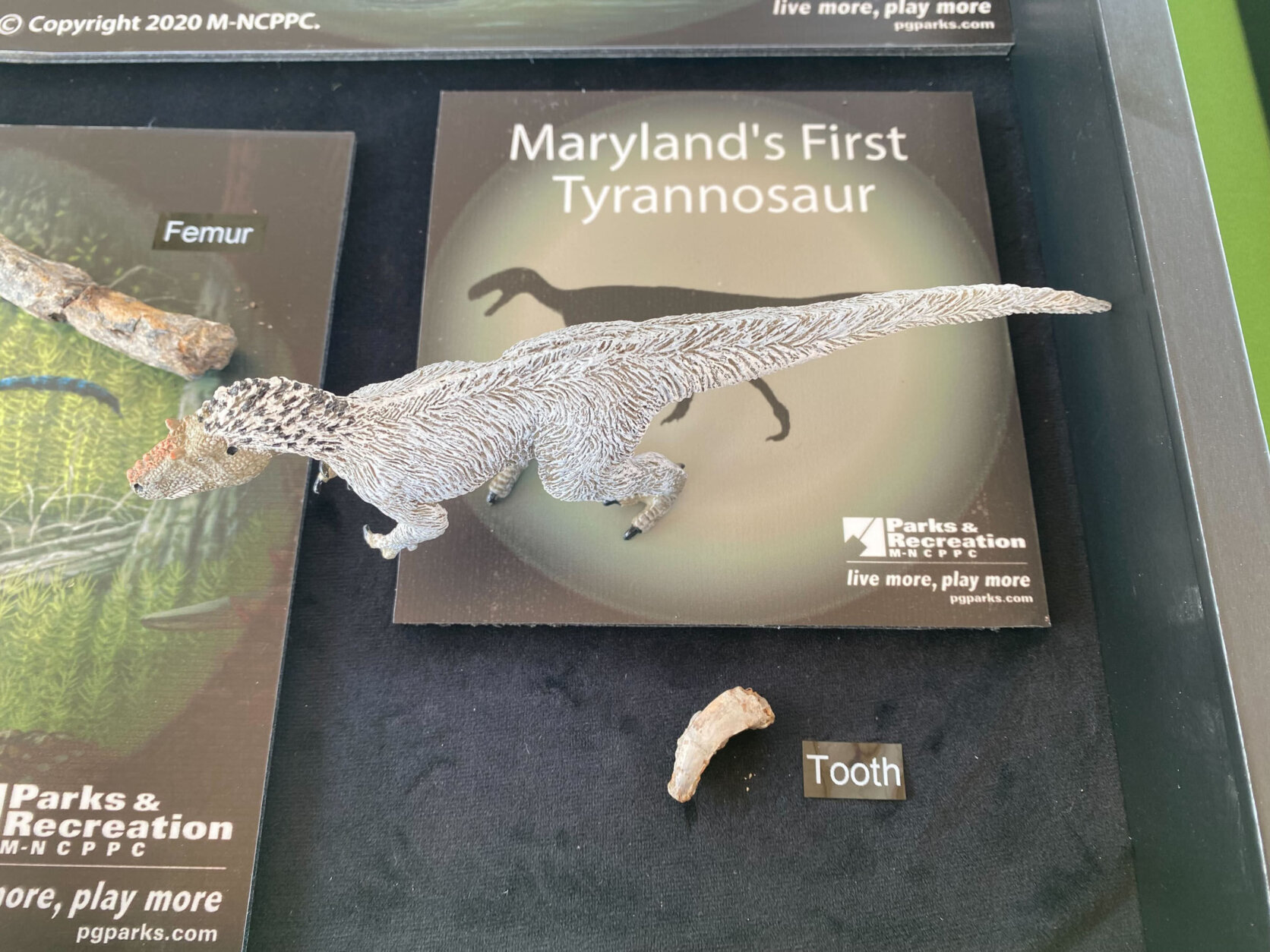
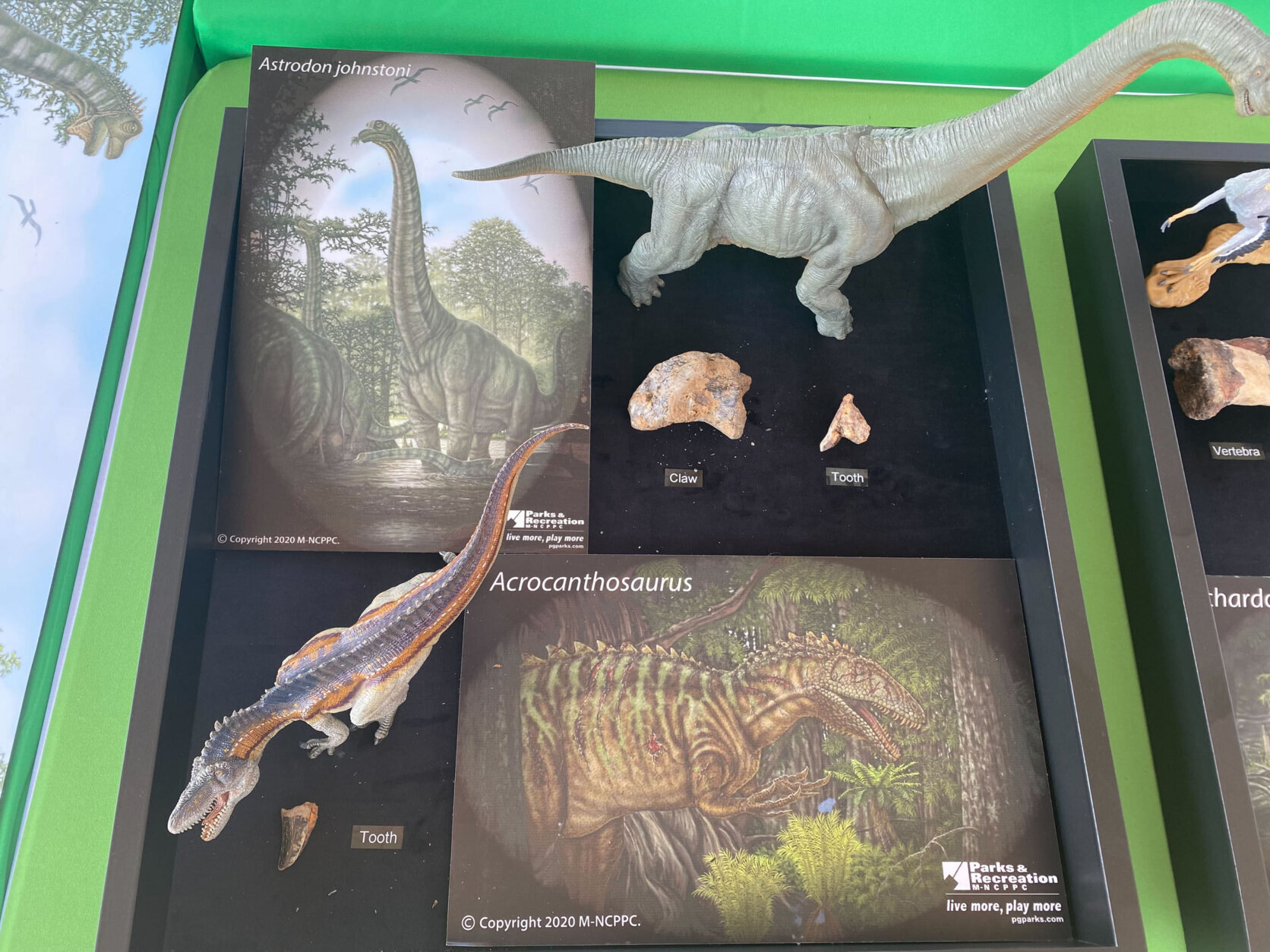
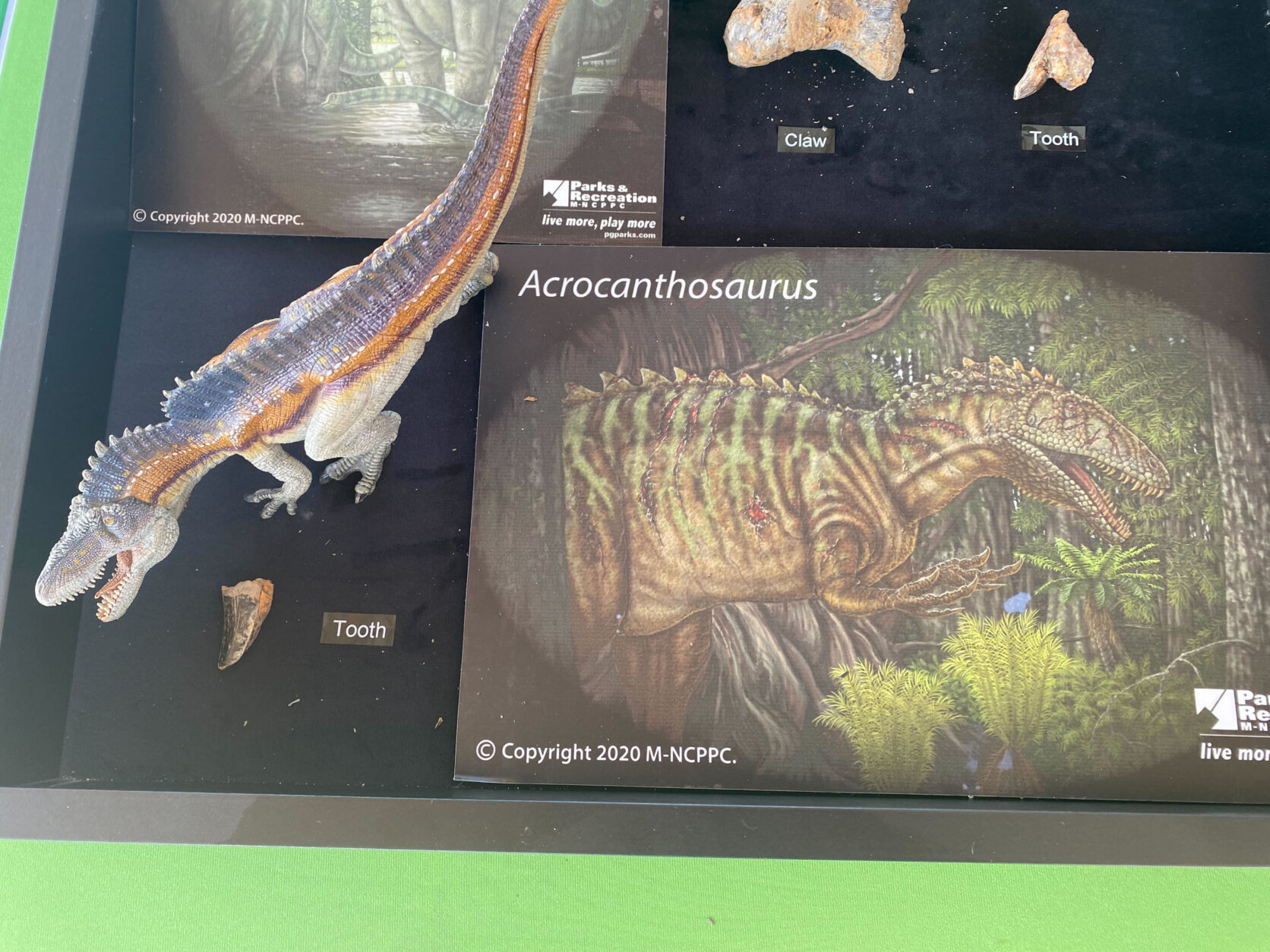
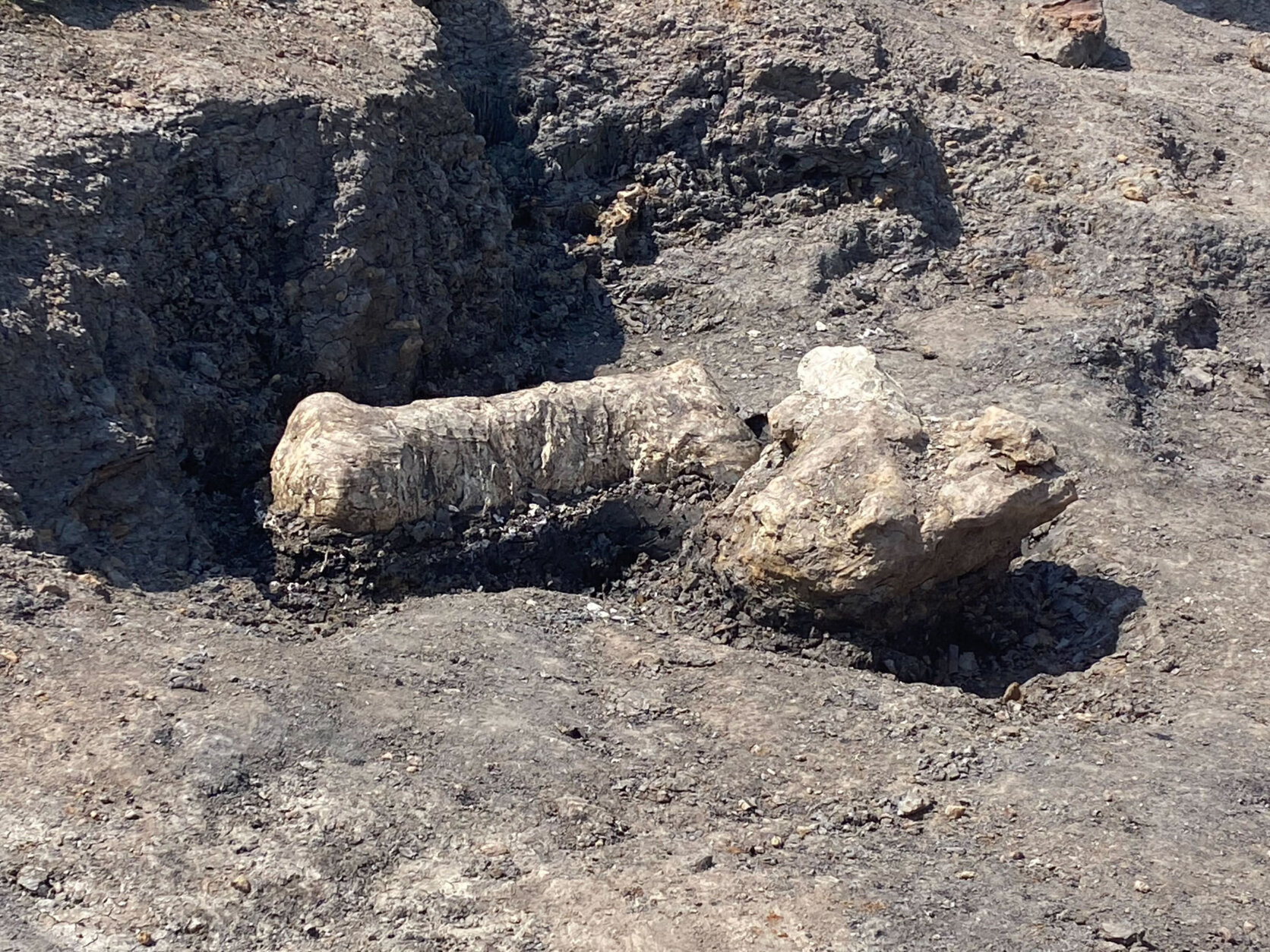
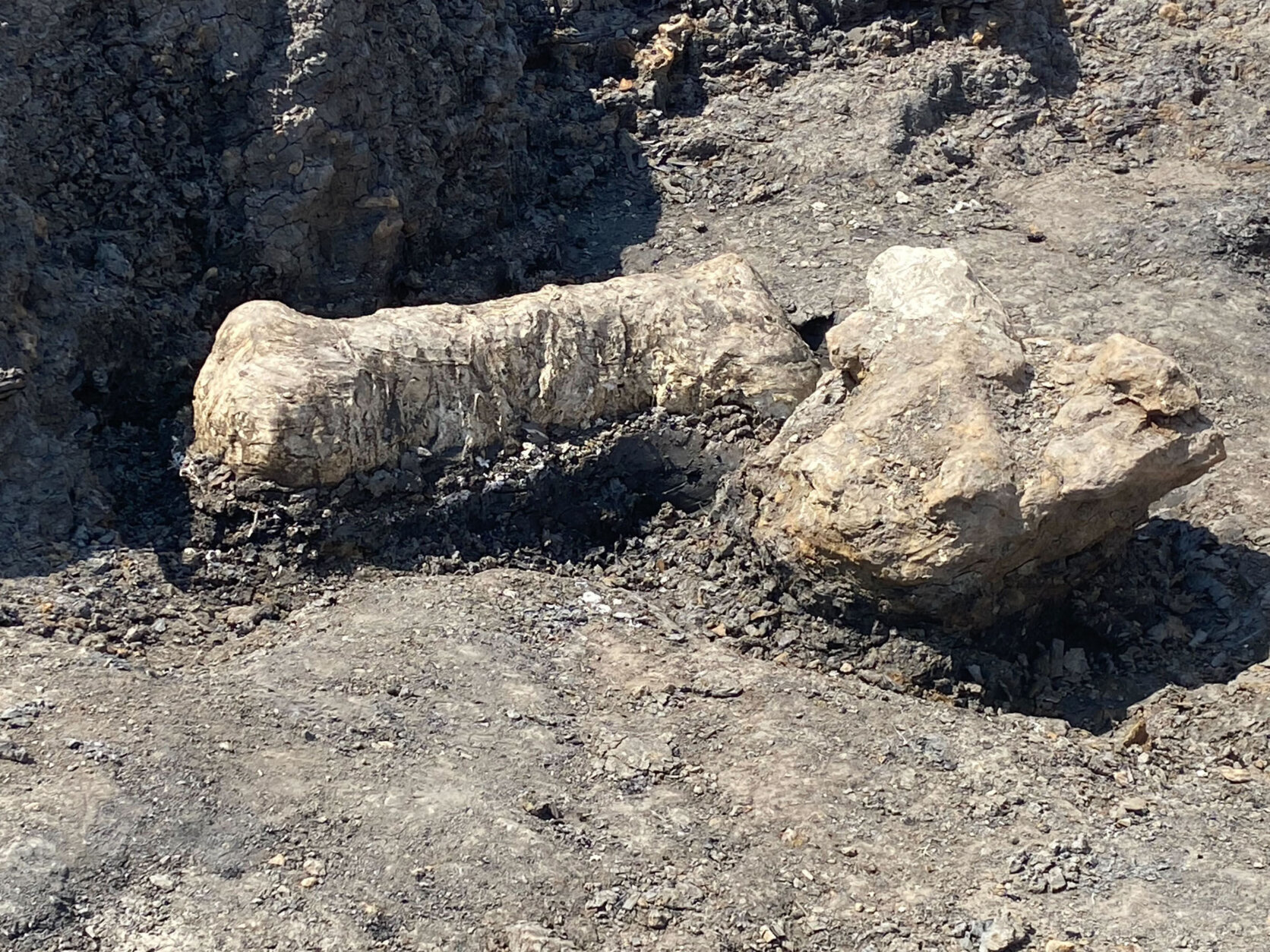
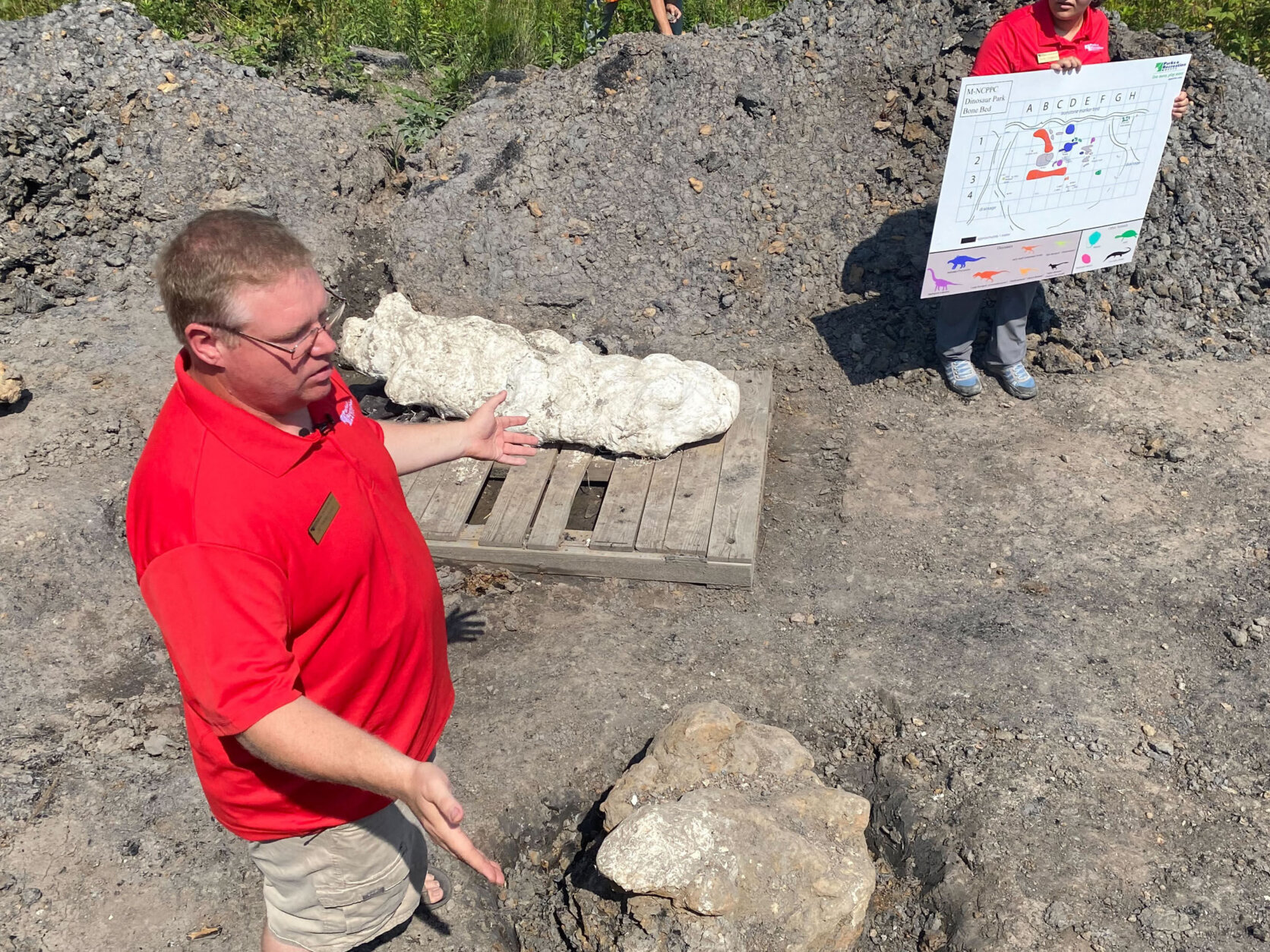
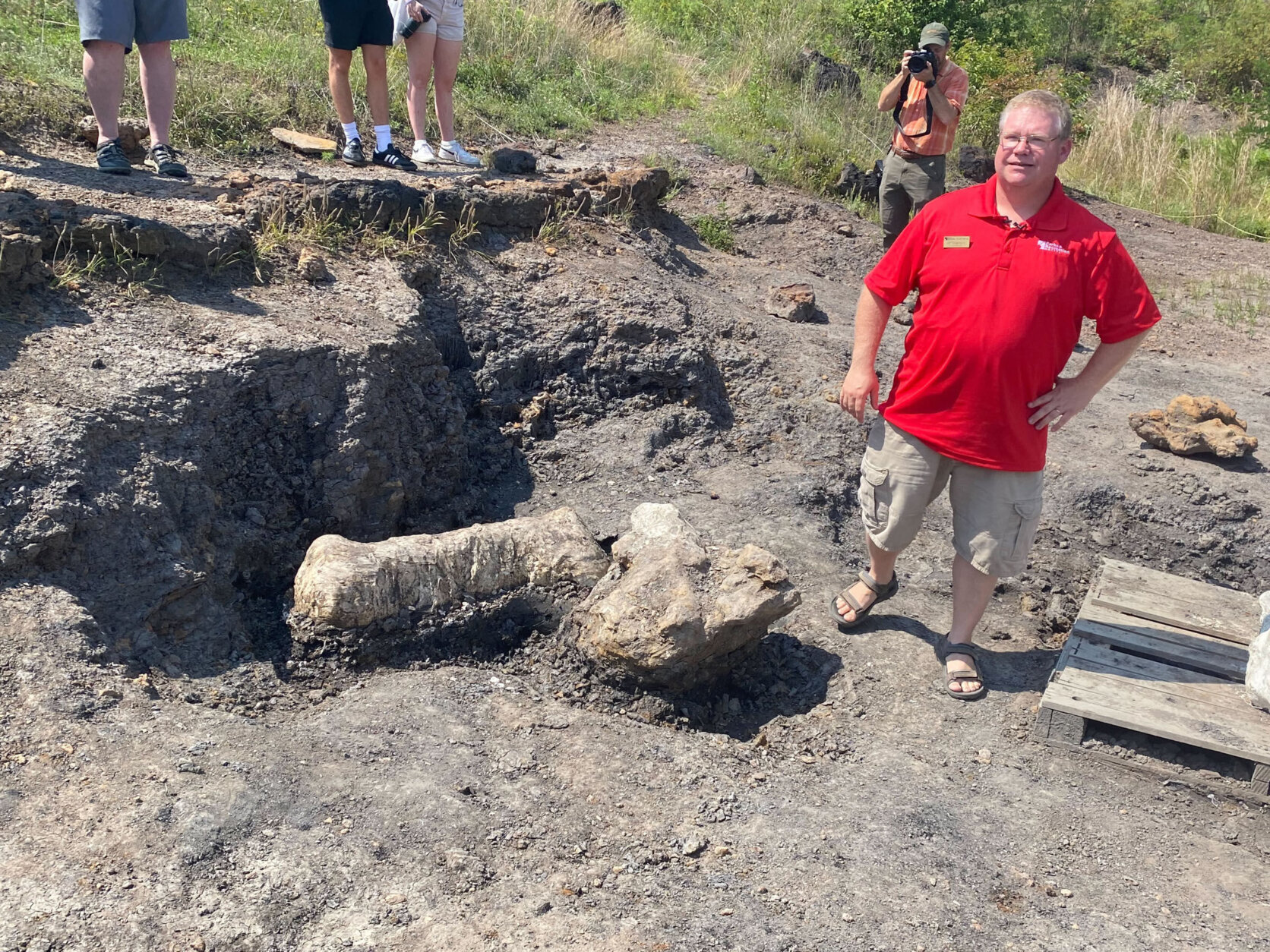
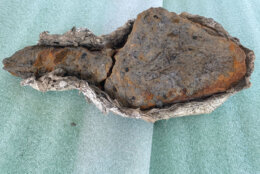
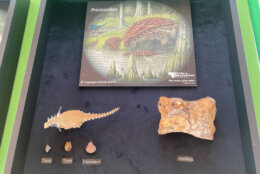
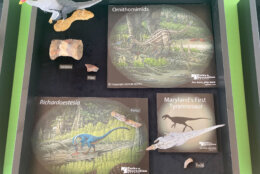
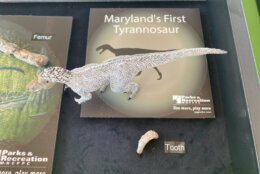
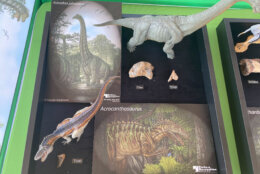
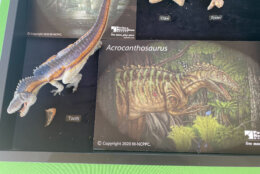
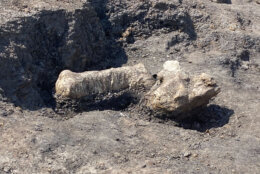
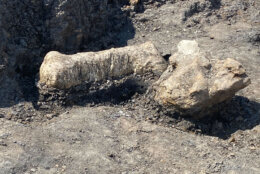
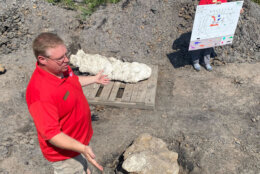
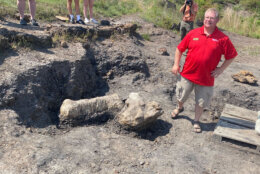
Scientists also believe they’ve unearthed fossils from a tyrannosaur, a precursor to the T. rex that roamed the Western United States tens of millions of years later.
“Back at this time, the tyrannosaurs were like the jackals or the coyotes,” Holtz said.
Some of the bigger bones are getting hauled away for more analysis, but thousands of fossils are believed to be embedded in the rock.
Though many of them are on the smaller side, Hodnett said it is a paleontologist’s dream site.
“People don’t think of the National Capital Region as a major center for fossils. But this site is the best dinosaur site east of the Mississippi,” Holtz said.
“And it already was before … simply on the diversity of fossils found. But now it’s even more so because we have these multiple large bones of multiple species found together. And it’s going to give us a lot more insights as to what was living here — and dying here — 115 million years ago.”








